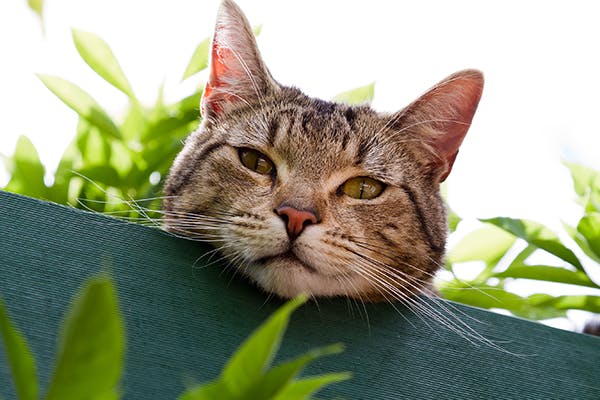Are you a cat lover? Do you want to ensure the health and well-being of your feline friend? Then get ready to uncover the captivating mystery behind FIP, or Feline Infectious Peritonitis. By understanding this enigmatic disease, you can protect your furry companion from its devastating effects. Did you know that FIP affects approximately 1 in every 3000 cats worldwide? That's more common than you might think! In this article, we will delve into the depths of this puzzling illness, exploring its causes, symptoms, and potential treatments. So grab your detective hat and join us on this journey as we unravel the secrets of FIP and arm ourselves with knowledge to safeguard our beloved feline companions. Let's dive in!
Key Takeaways:
- Feline Infectious Peritonitis (FIP) is a complex and often fatal viral disease that affects cats.
- It is caused by a mutation of the feline coronavirus, which can lead to an abnormal immune response in some cats.
- FIP can affect cats of all ages, but it is more commonly seen in young kittens and cats with weakened immune systems.
- The symptoms of FIP can vary greatly, making diagnosis challenging. Common signs include weight loss, fever, lethargy, and fluid accumulation in the abdomen or chest.
- Unfortunately, there is currently no cure for FIP. Treatment primarily focuses on managing symptoms and providing supportive care to improve the cat's quality of life.
Understanding FIP in Cats: What You Need to Know
Feline Infectious Peritonitis (FIP) is a serious and often fatal disease that affects cats. It is caused by a type of virus called feline coronavirus. FIP can affect cats of all ages, but it is more common in young kittens and cats with weakened immune systems. When a cat becomes infected with the feline coronavirus, their immune system may not be able to effectively fight off the virus, leading to the development of FIP.
There are two forms of FIP: wet and dry. The wet form is characterized by fluid accumulation in the abdomen or chest, while the dry form affects internal organs such as the liver, kidneys, or brain. Common symptoms of FIP include weight loss, fever, lethargy, loss of appetite, and difficulty breathing. If you notice these symptoms in your cat, it is important to seek veterinary care as soon as possible.
How FIP Affects Cats: Common Symptoms to Watch For
FIP can have a variety of symptoms depending on which organs are affected. Some common symptoms include:
- Weight loss
- Fever
- Lethargy
- Loss of appetite
- Difficulty breathing
- Jaundice (yellowing of the skin and eyes)
- Neurological signs such as seizures or changes in behavior
If your cat is displaying any of these symptoms, it is important to consult with a veterinarian for an accurate diagnosis. Keep in mind that these symptoms can also be indicative of other health issues, so it's crucial to have a professional assessment.
Causes and Transmission of FIP in Cats: What You Should Be Aware Of
Feline Infectious Peritonitis (FIP) is caused by a mutation of the feline coronavirus (FCoV). The exact cause of this mutation is not well understood, but it is believed to occur when the virus replicates in the cat's body. FCoV is commonly found in multi-cat environments such as shelters or catteries, where cats live in close quarters and can easily transmit the virus to one another.
The transmission of FCoV occurs through contact with infected bodily fluids, such as saliva or feces. Cats can become infected by sharing litter boxes, food bowls, or grooming each other. Kittens can also contract the virus from their mother during birth or through nursing. It's important to note that not all cats who are exposed to FCoV will develop FIP. Some cats are able to fight off the infection without developing any symptoms.
Prevention and Treatment Options for FIP in Cats: What Can be Done
Unfortunately, there is currently no known cure for Feline Infectious Peritonitis (FIP). Treatment options are limited and mainly focus on managing symptoms and improving the cat's quality of life. This may include medications to reduce inflammation or fluid accumulation, supportive care such as fluid therapy or nutritional support, and addressing any secondary infections that may arise.
In terms of prevention, it is crucial to minimize exposure to feline coronavirus (FCoV) in order to decrease the risk of FIP development. This can be done by practicing good hygiene and sanitation measures, such as regularly cleaning litter boxes and food bowls, avoiding overcrowded living conditions for cats, and isolating infected individuals from healthy ones.
FIP Risk Factors: Are Certain Cat Breeds More Susceptible?
While all cats can potentially develop Feline Infectious Peritonitis (FIP), certain breeds may have a higher susceptibility to the disease. Studies have shown that purebred cats, particularly those with a genetic predisposition, may be more prone to developing FIP. Breeds such as Abyssinians, Bengals, and Birman cats have been found to have an increased risk compared to mixed-breed cats.
It is important to note that genetics alone do not determine whether a cat will develop FIP or not. Other factors such as exposure to the feline coronavirus (FCoV) and the individual cat's immune response also play a significant role in the development of the disease. Therefore, while certain breeds may be at higher risk, it does not guarantee that all cats of that breed will develop FIP.
Diagnosing FIP in Cats: How Veterinarians Identify the Disease
Diagnosing Feline Infectious Peritonitis (FIP) can be challenging because there is no definitive test available. Veterinarians rely on a combination of clinical signs, physical examination findings, laboratory tests, and sometimes even biopsies or post-mortem examinations to make an accurate diagnosis.
Some common diagnostic tools used for FIP include blood tests to look for specific antibodies or elevated levels of certain proteins associated with the disease. Imaging techniques like X-rays or ultrasounds can help identify fluid accumulation or organ abnormalities. In some cases, a biopsy of affected tissues may be necessary for confirmation.
Ongoing Research for a Cure: Progress Made in Combatting FIP
Finding a cure for Feline Infectious Peritonitis (FIP) has been challenging due to the complexity of the disease and its ability to evade the immune system. However, ongoing research efforts are making progress towards understanding and potentially treating FIP.
One promising avenue of research involves antiviral drugs that target the feline coronavirus (FCoV) responsible for FIP. These drugs aim to inhibit viral replication and reduce the severity of the disease. Another approach being explored is the development of vaccines that can prevent or minimize FCoV infection, thereby reducing the risk of FIP.
While a definitive cure for FIP is not yet available, these ongoing research efforts provide hope for future advancements in combating this devastating disease.
In conclusion, Feline Infectious Peritonitis (FIP) is a mysterious and deadly disease that affects cats. It is caused by a virus and can have different forms, making it difficult to diagnose and treat. More research is needed to fully understand FIP and find effective treatments for our feline friends.
What are the first signs of FIP in cats?
The initial symptoms of FIP can differ but commonly involve a fluctuating fever, decreased appetite, and fatigue. As the condition progresses, infected cats may display additional symptoms of FIP, which depend on whether it is the "dry" or "wet" form. Cats can experience symptoms of either form or a combination of both.
Has any cat ever survived FIP?
Luckily, there is a solution available! The treatment for FIP involves a 12-week treatment period followed by 12 weeks of observation. After completing the treatment, your kitten will be completely cured and considered a survivor of FIP.
How long can a cat live with FIP?
In most cases, wet FIP is fatal within approximately five weeks of being diagnosed. The dry form is just as deadly, but affected cats may live for a few months.
What is end stage FIP in cats?
Feline infectious peritonitis (FIP) is a condition that occurs as a result of an abnormal immune response to feline coronavirus (FCoV) infection. In the initial phase, symptoms are similar to a common cold. Later, symptoms progress to include problems with coordination, muscle weakness, and difficulty swallowing. In the end stage, the individual may experience difficulty breathing, urinary incontinence, and paralysis.
How can an indoor cat get FIP?
FECV resides in the intestinal cells of cats and is released in their feces. Cats contract FECV by ingesting the virus while grooming or eating. The mutated form of the virus, FIPV, which causes the disease, is not transmissible to other cats.
What does FIP belly feel like?
There are two forms of FIP: an acute form, also called "wet" FIP, and a chronic form, known as "dry" FIP. The acute form occurs suddenly and is characterized by fluid accumulation in the abdomen and chest, leading to breathing difficulties and potentially a swollen abdomen.

















